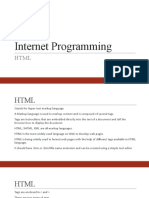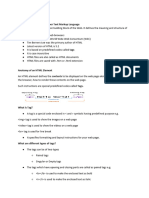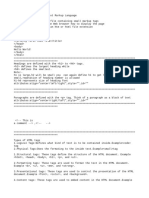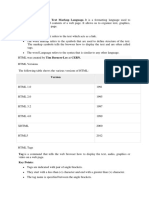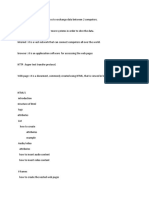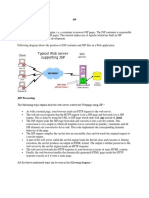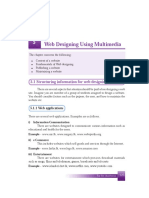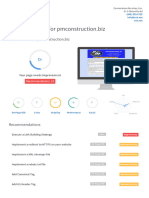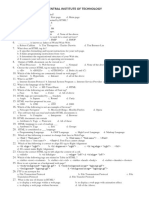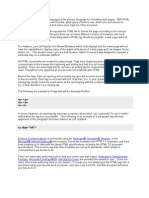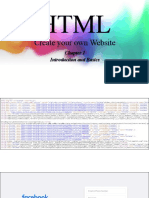0% found this document useful (0 votes)
152 views27 pagesHTML Freshers
The document provides an overview of HTML including:
1. A brief history of HTML and how it has evolved over time from Tim Berners-Lee's original creation in 1991 to current versions.
2. An explanation of key HTML elements and tags such as headings, paragraphs, images, lists, and forms. It also describes attributes that provide additional information about elements.
3. An outline of the basic structure of an HTML document which includes the <!DOCTYPE>, <html>, <head>, and <body> tags and how they are organized.
Uploaded by
VIDEOS JUNCTIONCopyright
© © All Rights Reserved
We take content rights seriously. If you suspect this is your content, claim it here.
Available Formats
Download as PDF, TXT or read online on Scribd
0% found this document useful (0 votes)
152 views27 pagesHTML Freshers
The document provides an overview of HTML including:
1. A brief history of HTML and how it has evolved over time from Tim Berners-Lee's original creation in 1991 to current versions.
2. An explanation of key HTML elements and tags such as headings, paragraphs, images, lists, and forms. It also describes attributes that provide additional information about elements.
3. An outline of the basic structure of an HTML document which includes the <!DOCTYPE>, <html>, <head>, and <body> tags and how they are organized.
Uploaded by
VIDEOS JUNCTIONCopyright
© © All Rights Reserved
We take content rights seriously. If you suspect this is your content, claim it here.
Available Formats
Download as PDF, TXT or read online on Scribd
/ 27


